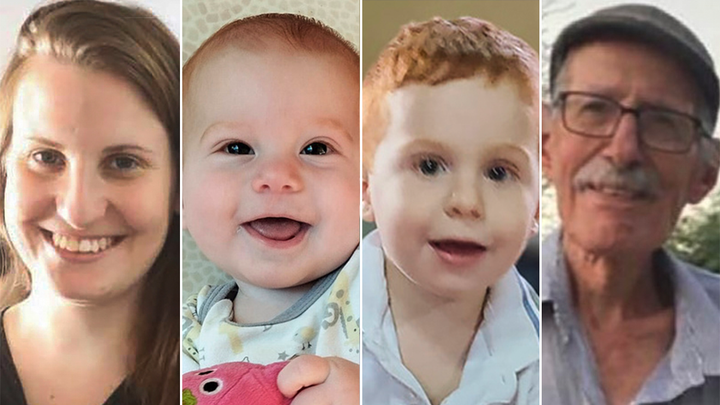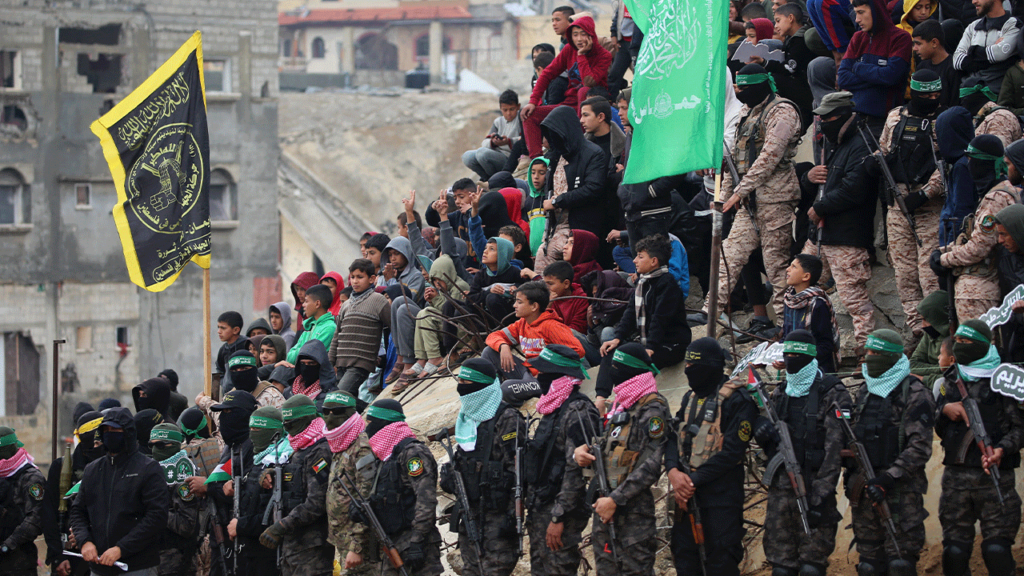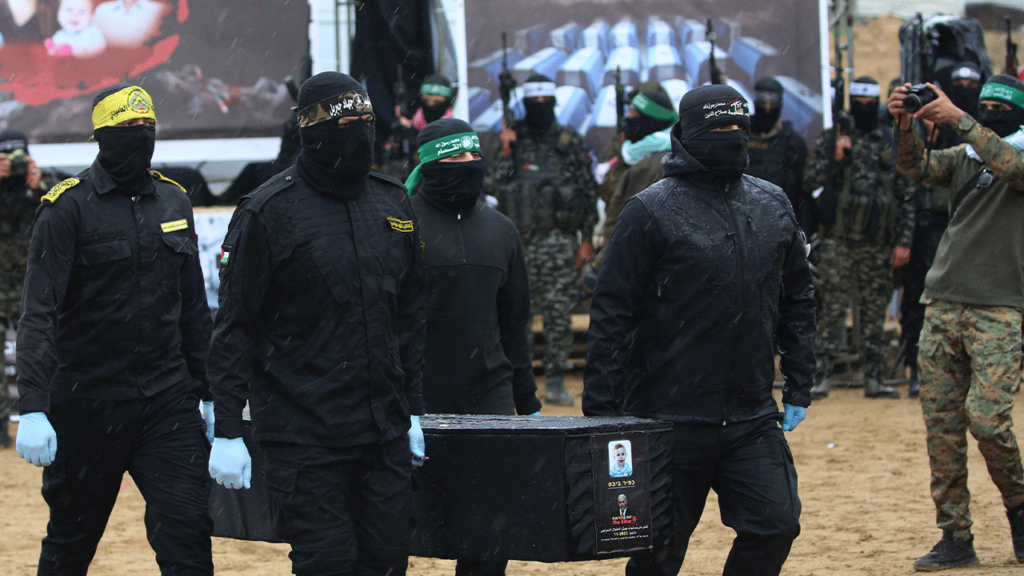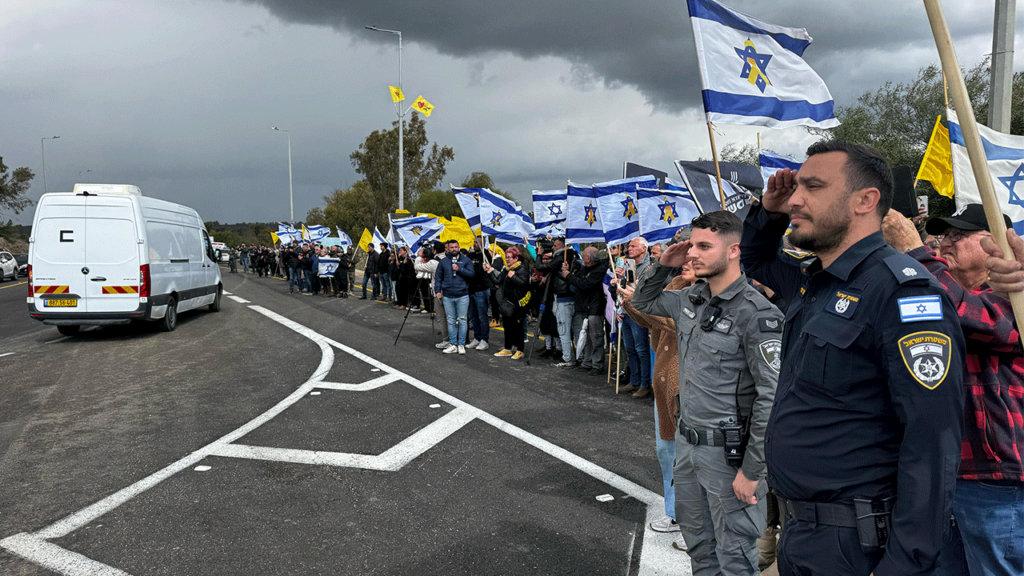
In a deeply emotional and politically charged ceremony held on February 20, 2025, Hamas returned the bodies of the youngest hostages taken during the October 7, 2023, attack. The four coffins—carrying the remains of nine-month-old Kfir Bibas, his four-year-old brother Ariel, their mother Shiri Bibas, and 84-year-old peace activist Oded Lifschitz—became potent symbols of loss and the complicated dynamics at play in the Israel-Hamas conflict. This event, staged in southern Gaza at Khan Younis, not only underscored a nation’s profound grief but also brought into stark relief the fragile nature of the current ceasefire arrangement.
In this post, we will delve into the details of the handover, the political messaging intertwined with it, the framework of the ceasefire deal, and the broader historical context that has led to this moment. We will also explore the human toll of the conflict and address some frequently asked questions to provide a comprehensive understanding of the ongoing crisis.
LATEST UPDATE : Tragic Confirmation for the Bibas Family: Shiri Bibas’ Remains Returned by Hamas
A Choreographed Display of Grief and Propaganda
The Ceremony in Khan Younis
On that fateful day in Khan Younis, Hamas militants orchestrated a highly publicized and somber event. Four black coffins were prominently displayed on a stage, each adorned with the photograph of a hostage. The stark visual presentation was accentuated by the presence of armed fighters and provocative imagery. One striking poster depicted Israeli Prime Minister Benjamin Netanyahu as a vampire, a symbolic representation intended to criticize his policies and portray Israel as complicit in its own suffering.
This theatrical presentation was not simply about the return of bodies—it was a carefully calculated political statement. By staging the event in such a manner, Hamas sought to underscore the brutality of the conflict while simultaneously bolstering its own narrative. The use of anti-Israel imagery and charged rhetoric was designed to resonate deeply with both local and international audiences, highlighting the emotional and symbolic weight of the tragedy.
Transport and Verification
Immediately following the ceremony, the bodies were transported by Red Cross vehicles to Israel. Here, forensic experts began the painstaking process of DNA verification—a crucial step to confirm the identities of the deceased. This verification process, expected to take several days, was critical not only for the families involved but also for the broader political narrative. In Israel, crowds gathered along the streets, draped in yellow ribbons—a symbol of solidarity with the hostages and a public demonstration of the nation’s collective grief.
Israeli leaders were quick to respond. President Isaac Herzog described the day as one of “unbearable grief,” while Prime Minister Netanyahu, amid his own expressions of sorrow, vowed that Hamas would face the consequences of its actions. These statements, reflective of both mourning and resolve, encapsulated the profound national trauma experienced by Israelis in the wake of the attacks.
The Ceasefire Deal: Structure and Significance

A Fragile Truce in a Turbulent Landscape
The return of the hostages’ remains was not an isolated incident but rather part of a larger ceasefire deal that has held the Israel-Hamas conflict in a tense stalemate for the past 15 months. This U.S.-backed agreement, brokered by influential regional players such as Qatar and Egypt, is built on a phased approach aimed at de-escalation and eventual reconstruction in Gaza.
Breaking Down the Ceasefire Agreement
The ceasefire deal is structured into three distinct phases:
1. Phase 1 (42 Days): Immediate Humanitarian and Prisoner Exchange Measures
- Hostage-Prisoner Swaps: Under the terms of this phase, Hamas is required to release a number of hostages—prioritizing women, children, and the elderly—while Israel is expected to reciprocate by releasing Palestinian prisoners. So far, this phase has seen the exchange of 19 Israeli hostages for approximately 1,135 Palestinian prisoners.
- Humanitarian Aid: In a move designed to alleviate the humanitarian crisis in Gaza, 600 aid trucks are now allowed to enter the region daily—an increase that represents a sixfold rise from the levels observed in December 2024.
- Military Withdrawals: In a bid to create a more stable environment, Israeli forces have begun retreating from densely populated areas, facilitating the return of displaced Palestinians to their homes.
2. Phase 2: Establishing a Permanent Ceasefire
This phase hinges on further confidence-building measures. The permanence of the ceasefire is contingent upon Hamas releasing any remaining hostages and Israel completing its military withdrawal from Gaza. However, as negotiations continue, progress in this phase remains uncertain, with both sides facing significant political and strategic challenges.
3. Phase 3: Reconstruction and Long-Term Stabilization
The final phase of the agreement envisions a massive international effort to rebuild Gaza, with a proposed $40 billion reconstruction plan on the table. Despite this ambitious vision, disagreements over governance and the role of Hamas in a post-conflict scenario persist, casting a shadow over the prospects for a durable peace.
Testing the Durability of the Ceasefire
The handover of the hostages’ remains marks the first instance under this ceasefire deal where deceased hostages have been returned. This significant moment tests the resilience of the agreement. While the exchange has provided a brief respite from the ongoing violence, it also highlights the deep-seated issues that remain unresolved—issues that continue to fuel mistrust and animosity on both sides.

Historical Context: From Past Conflicts to the Present Crisis
The Origins of the Israel-Hamas Conflict
To fully grasp the significance of recent events, it is essential to understand the historical backdrop against which they have unfolded. The conflict between Israel and Hamas is not a new phenomenon; rather, it is the latest chapter in a long-standing struggle rooted in decades of territorial disputes, political instability, and deep-seated mutual animosity.
The most recent escalation began on October 7, 2023, when Hamas militants launched a devastating attack that resulted in the deaths of 1,200 Israelis and the abduction of 251 individuals. The brutality of this assault shocked the world and set off a chain reaction. In response, Israel initiated a military campaign in Gaza—a campaign that, according to Gaza’s health ministry, has claimed the lives of over 48,000 Palestinians. These staggering figures have not only left indelible scars on both societies but have also transformed individuals and families into symbols of national trauma and resilience.
Pivotal Moments and Diplomatic Maneuvers
Several key events have shaped the course of this conflict:
- 2023 Hostage Deals: In the aftermath of the initial attack, there were brief periods of negotiation, including a weeklong truce in November 2023 that led to the temporary release of 105 hostages. However, these early talks ultimately collapsed, paving the way for further violence.
- UN Resolution 2735: Passed in June 2024, this resolution laid the groundwork for the current three-phase ceasefire. It provided a diplomatic framework intended to de-escalate the conflict and establish a pathway toward lasting peace.
- International Pressure: The diplomatic landscape has been heavily influenced by the involvement of global leaders. U.S. President Joe Biden, along with former President Donald Trump—who notably threatened dire consequences for Hamas—played crucial roles in pushing for a ceasefire deal. Their interventions underscored the international community’s deep investment in resolving the conflict, albeit with mixed results.
The Human Toll: Statistics and Stories
Stark Numbers Amidst Tragic Loss
The human cost of the Israel-Hamas conflict is both immense and heart-wrenching. Consider the following figures:
- Israeli Casualties: On October 7, 2023, the initial assault claimed the lives of approximately 1,200 Israelis. In addition, 251 individuals were abducted, with the Bibas family emerging as a particularly poignant symbol of the tragedy.
- Palestinian Casualties: In Gaza, the ongoing military operations have resulted in the deaths of roughly 48,000 Palestinians, with a significant proportion—about 70%—being women and children.
- Hostage Statistics: Currently, 73 hostages remain in Gaza, with 35 believed to have been killed.
- Prisoner Releases: In the exchange process, Israel has freed around 1,900 Palestinian prisoners, including some who were serving life sentences.
Personal Stories and National Symbols
Among the hostages, the Bibas family holds a unique and tragic place in the collective memory of the Israeli public. Kfir Bibas, just nine months old at the time of his abduction, became the youngest victim ever taken during such an incident in Israel’s history. His story, along with that of his four-year-old brother Ariel and their grieving family, resonates powerfully with a nation already reeling from loss. Their story is not merely one of personal tragedy; it has evolved into a potent symbol of the broader suffering inflicted by the conflict.
For many Israelis, the images of the Bibas family serve as a stark reminder of the human cost of violence and the ongoing challenges in the pursuit of peace. Conversely, within Palestinian circles, the same event has been interpreted as a demonstration of the high stakes involved in maintaining a ceasefire—a ceasefire that, while offering temporary relief, does not resolve the underlying issues.

Propaganda and Political Messaging: The Power of Imagery
The Role of Symbolism in Conflict
The use of propaganda in modern conflicts cannot be underestimated. In the case of the recent handover, Hamas’s decision to stage a highly choreographed event with striking visual elements was designed to achieve multiple objectives. The imagery—a combination of somber displays of grief and aggressive political messaging—served to reinforce Hamas’s narrative of resistance while casting a critical light on Israeli leadership.
By portraying Israeli Prime Minister Netanyahu as a vampire and framing the tragedy as part of a broader narrative of Israeli self-destruction, Hamas sought to influence public perception both locally and internationally. This symbolic maneuvering is a common tactic in conflicts of this nature, where visual narratives can be as powerful as military strategies.
International Reactions and Media Coverage
The international media have been quick to pick up on the symbolism employed during the handover. Headlines around the world have highlighted the tragic loss, while also scrutinizing the broader political implications of the event. Analysts have noted that while the ceasefire deal has managed to slow the violence, the deep divisions and mistrust on both sides continue to pose significant obstacles to any lasting resolution.
Global leaders and diplomats have expressed cautious optimism about the ceasefire’s potential to pave the way for future negotiations. However, they also acknowledge that the event underscores the enormity of the challenges ahead—a reminder that even moments of pause in the violence are fraught with political and humanitarian complexities.
Also read : Elon Musk Debuts Grok 3: The AI Model That Outperforms ChatGPT & DeepSeek
Looking Ahead: What’s Next for the Ceasefire and the Conflict?
Unresolved Issues and Ongoing Negotiations
Despite the temporary calm brought about by the ceasefire, many critical issues remain unresolved. One of the most pressing challenges is the continued presence of 73 hostages in Gaza, with a significant number presumed dead. The hostage exchange mechanism, while a necessary step toward de-escalation, has not yet addressed the broader questions of accountability and reconciliation.
Another major point of contention is the political future of Gaza. The reconstruction phase of the ceasefire deal, backed by an international plan worth $40 billion, holds promise for a renewed start. Yet, deep-seated disagreements over governance, the role of Hamas, and the overall framework for peace have left many skeptical about the feasibility of long-term stability.
The Role of International Influences
International diplomacy continues to play a critical role in shaping the trajectory of the conflict. The ceasefire deal, largely brokered by the United States with significant input from Qatar and Egypt, illustrates the high stakes and the complex web of regional and global interests at play. The involvement of influential figures such as President Biden and former President Trump has further underscored the international community’s vested interest in preventing the conflict from spiraling into further violence.
These diplomatic efforts, however, come with their own challenges. The balance between pressure and compromise is delicate, and any misstep could potentially unravel the progress made thus far. As negotiations continue, both sides remain wary of giving away too much while also recognizing the need for tangible steps toward peace.
Conclusion
The return of the Bibas family’s remains starkly underscores the human cost of this conflict. It serves as a painful reminder of deep national grief while also highlighting the fragile hope offered by the ceasefire. Though the temporary pause in violence provides a moment for reflection, major issues remain unresolved, threatening any lasting peace. Ultimately, lasting reconciliation depends on addressing long-standing grievances and making difficult compromises—a challenge that continues as international efforts strive for a more stable future.
Frequently Asked Questions (FAQs)
1. Why does the Bibas family hold such symbolic significance?
Their tragedy, especially the loss of nine‐month-old Kfir, encapsulates the brutal human cost of the October 7, 2023, attack, symbolizing national trauma.
2. How does the hostage exchange mechanism work under the ceasefire deal?
Hamas releases hostages in prioritized batches (women, children, elderly), while Israel frees Palestinian prisoners, with the Red Cross overseeing the controlled exchange.
3. What are the implications of the ceasefire for future negotiations?
The ceasefire is seen as a temporary pause; major hurdles like full troop withdrawal and complete hostage release remain, highlighting deep-rooted mistrust.
4. How have both sides reacted to the recent developments?
In Israel, the handover has sparked widespread mourning and demands for retribution, whereas Palestinians view it as a reminder of the high stakes in maintaining the ceasefire.
5. Could international intervention alter the conflict’s trajectory?
While global diplomatic efforts were crucial in brokering the ceasefire, lasting peace will depend on both sides addressing longstanding grievances—a challenge that remains uncertain.

2 thoughts on “Hamas Returns the Remains of Youngest Hostages: A Nation Mourns Amid a Fragile Ceasefire”